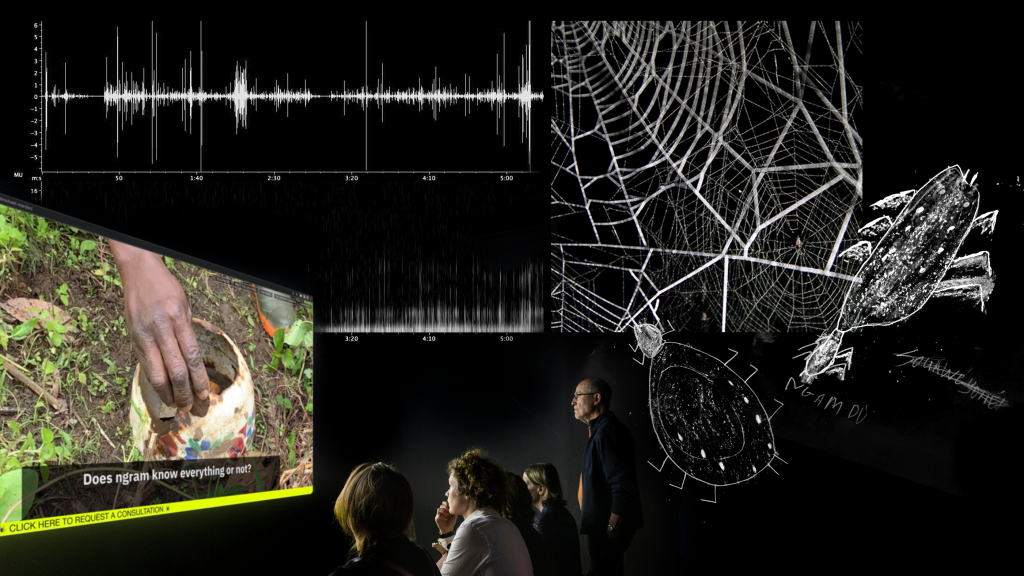

...

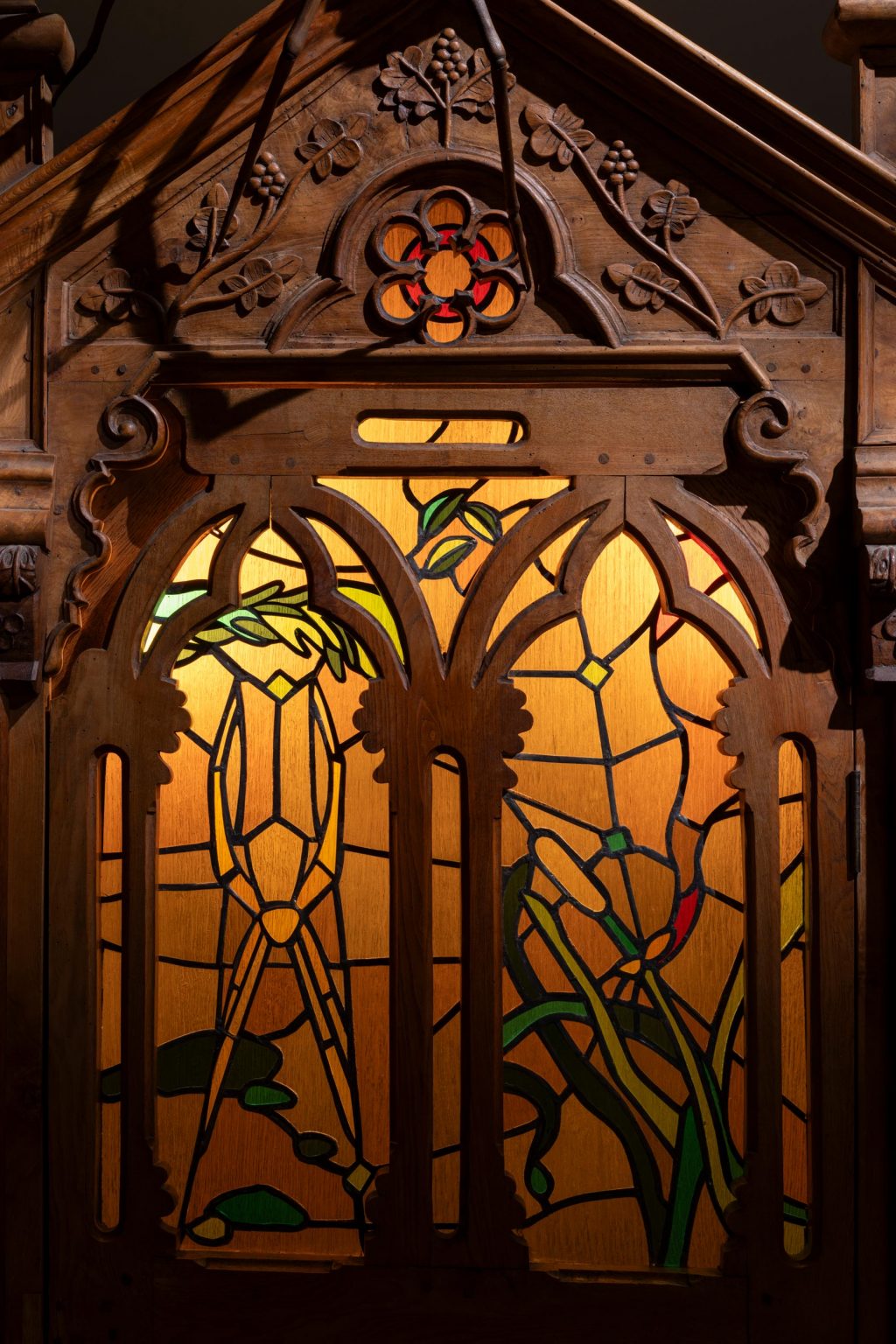
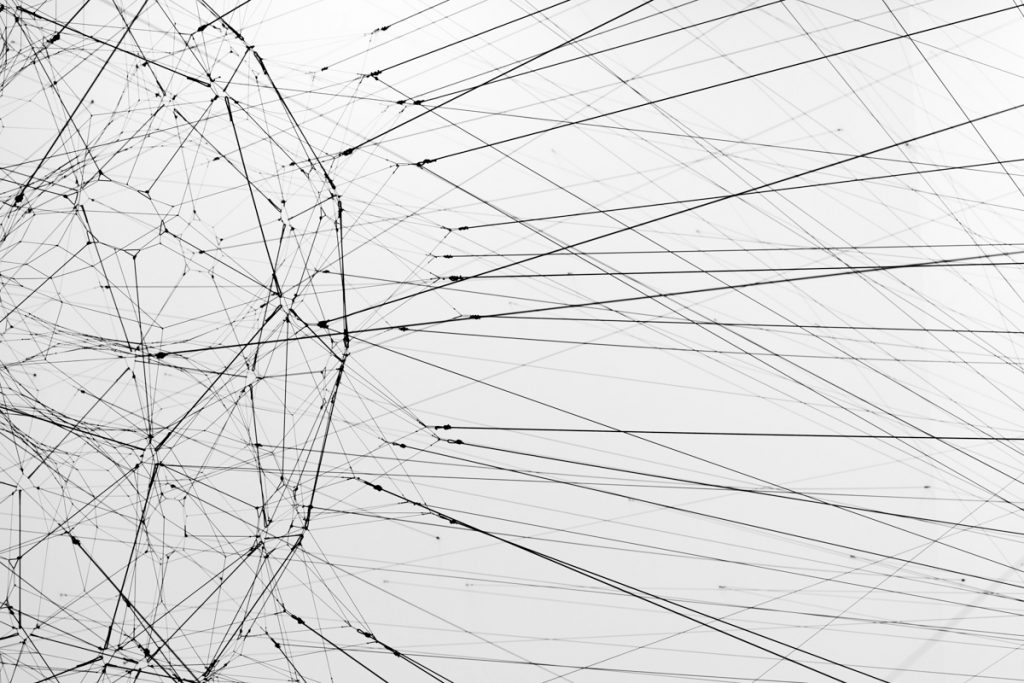










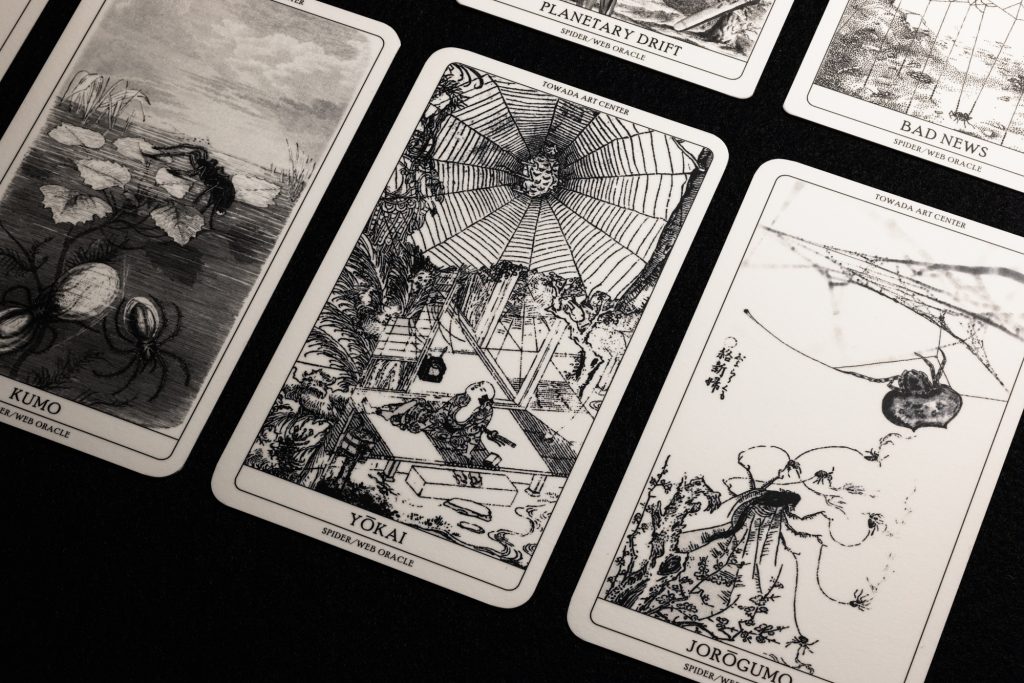










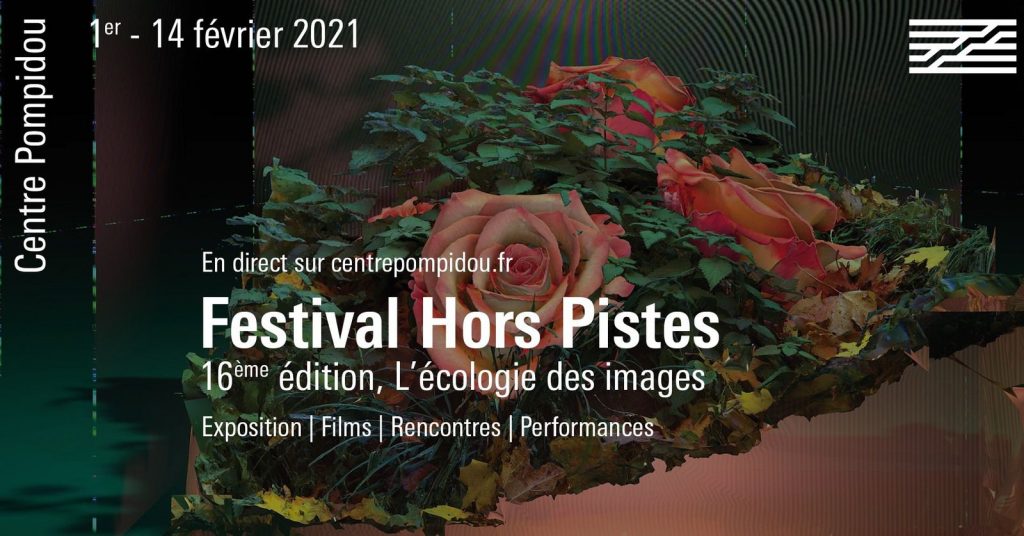



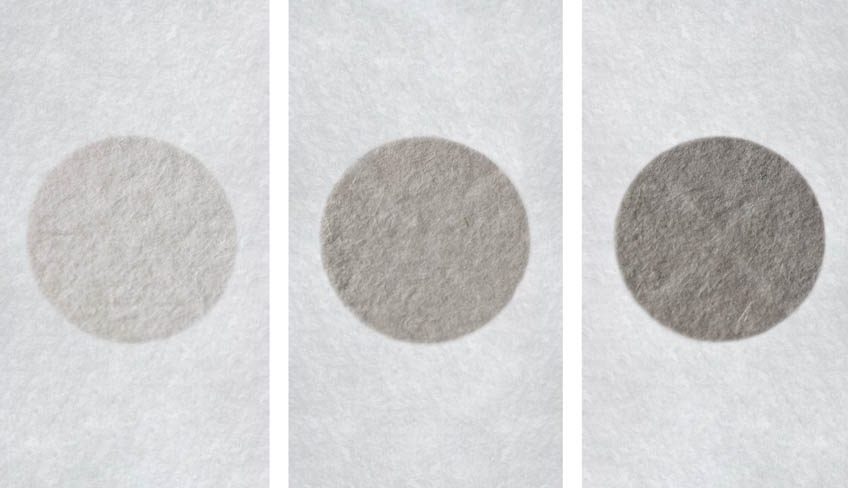





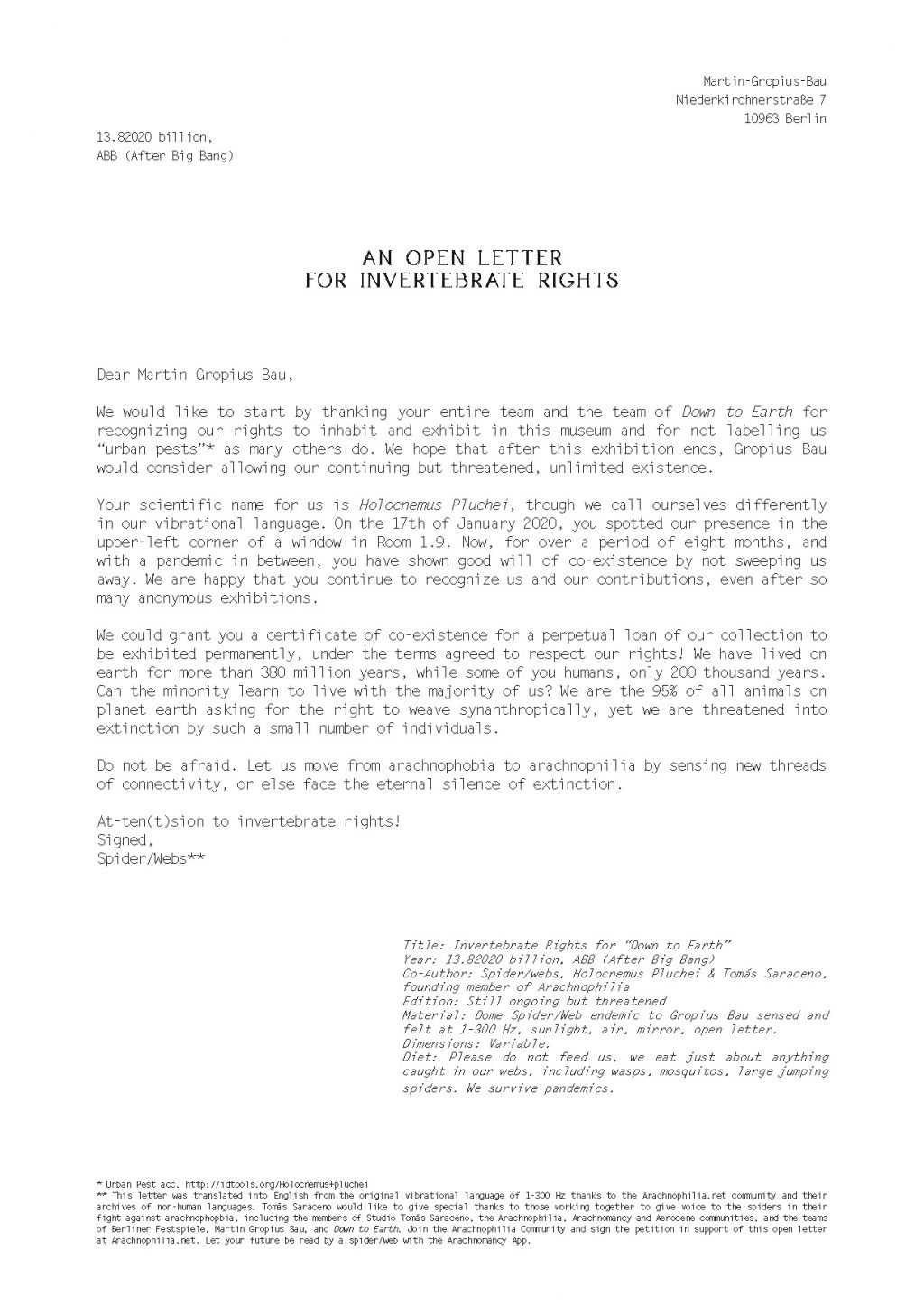







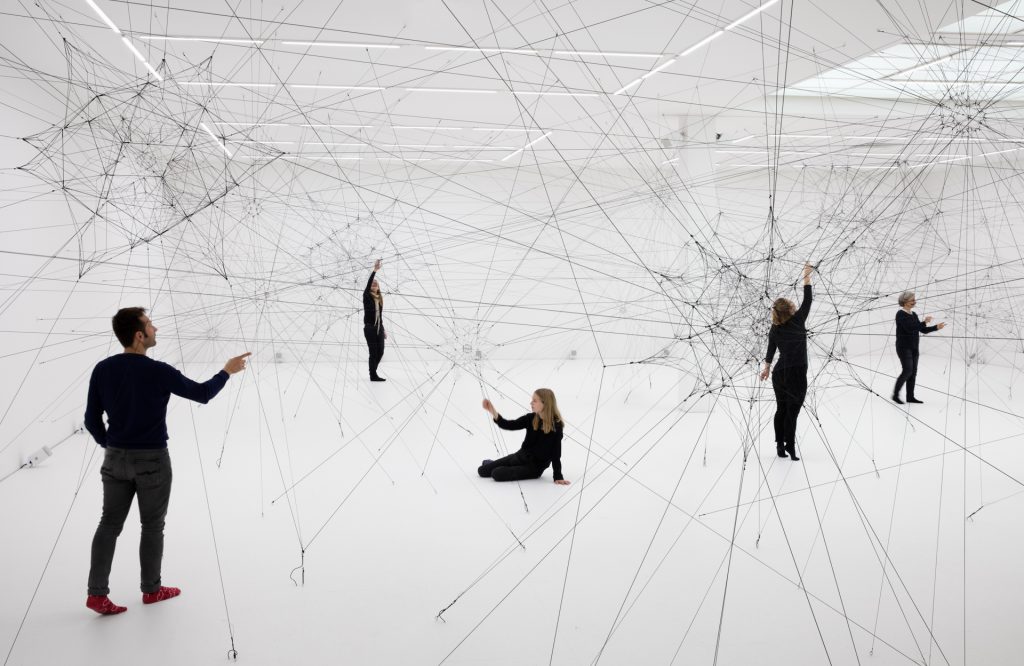

















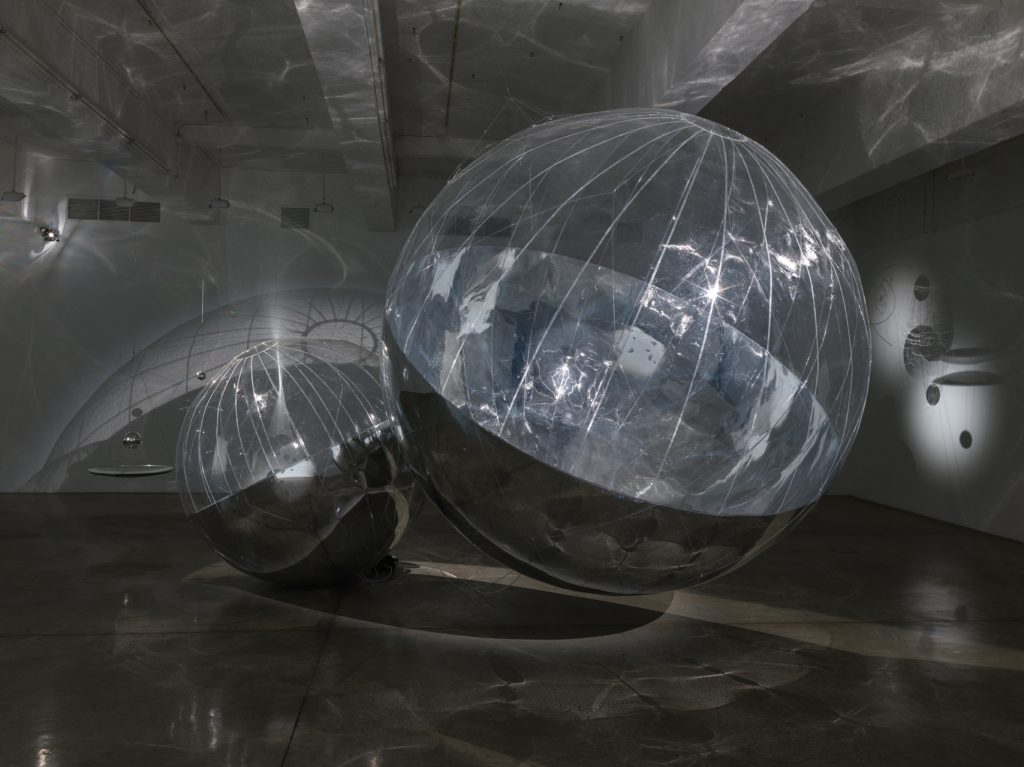





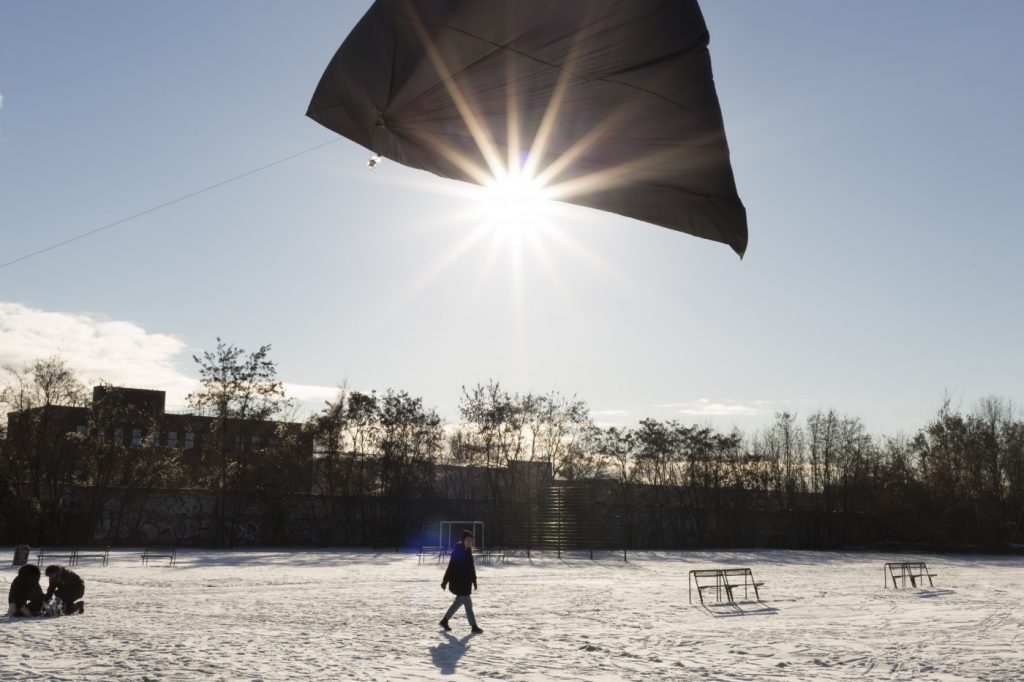


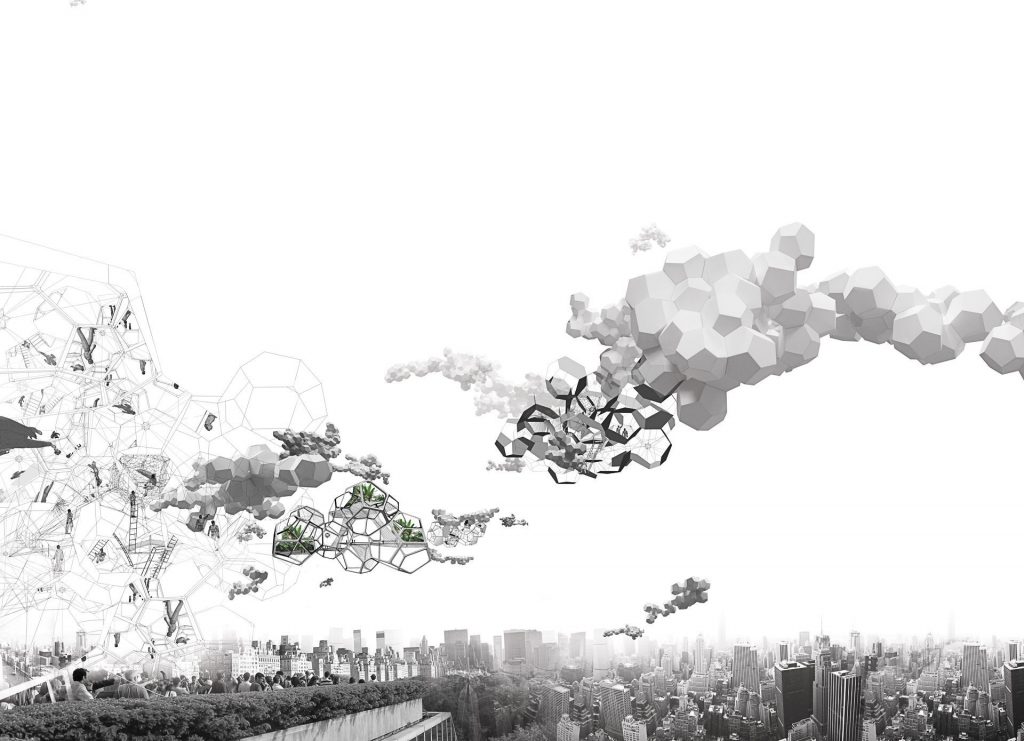

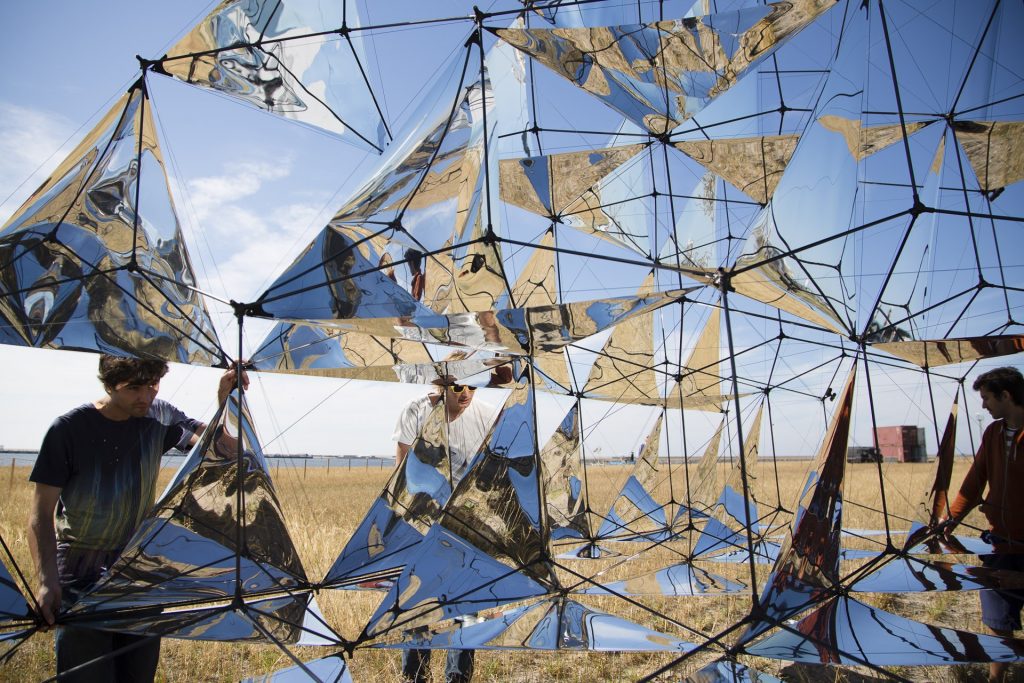










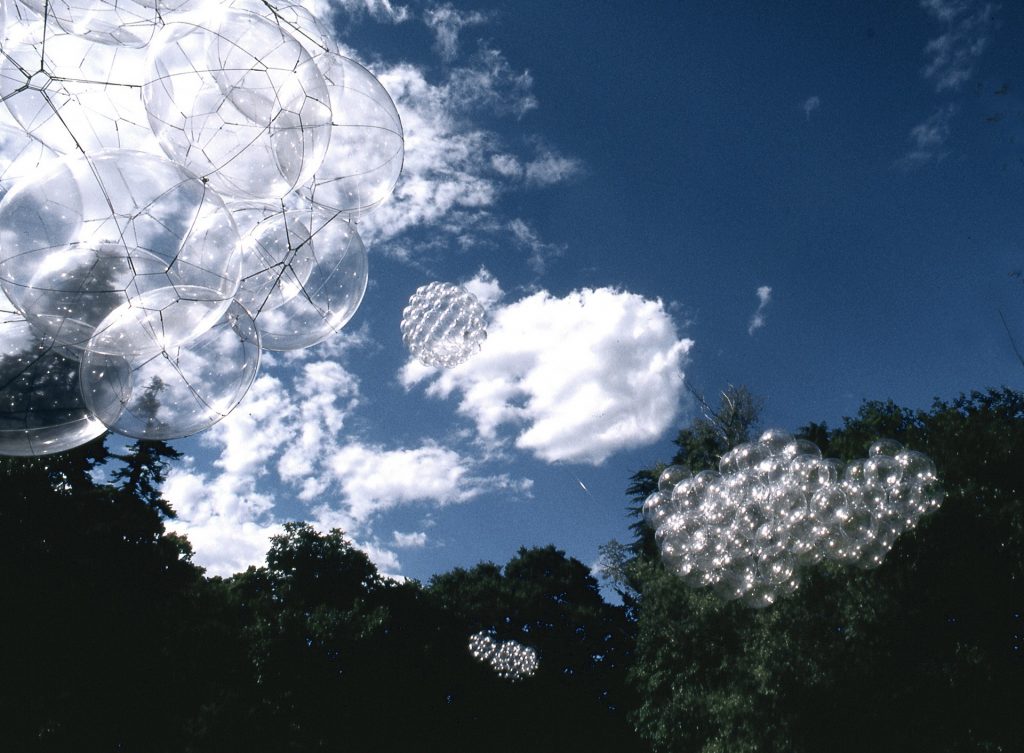
In the autumn of 2018, Palais de Tokyo invited Tomás Saraceno to take over the entirety of its exhibition spaces for the fourth edition of Carte Blanche. This seminal exhibition series, which began with Philippe Parreno in 2013, followed by Tino Sehgal in 2016 and Camille Henrot in 2017, invites one contemporary artist working at the forefront of the field to activate the whole of Palais de Tokyo’s galleries. The exhibition, ON AIR, curated by Rebecca Lamarche-Vadel, marked Saraceno’s largest project to date, bringing together a selection of his major works with ambitious new projects that transformed Palais de Tokyo into a uniquely sensory space.
Imagined as a constantly evolving choreography of voices, both human and non-human, ON AIR hosted a series of public events comprising workshops, concerts, and symposiums, coming together in a vast cosmic jam session. Scientific institutions, research groups, activists, local communities, visitors, musicians, philosophers, and celestial phenomena animated the exhibition spaces with new encounters and assemblies appearing out of this togetherness as part of nascent rhythms of interspecies solidarity.
The symposium took place over three days during the course of the exhibition:
October 26: “ON AIR live with…Aerocene”
November 23: “ON AIR live with…Networks”
December 14: “ON AIR live with…Arachnosophy”
“ON AIR live with…Aerocene”
Aerocene is an international and interdisciplinary artistic community that seeks to devise new modes of sensitivity and achieve an ethical collaboration with the atmosphere and the environment free from borders, free from fossil fuels. Initiated by Saraceno in 2015, together with a growing international community, Aerocene performs in, on, for and with the air. By collaboratively developing, testing and launching Aerosolar sculptures, Aerocene seeks to open up the imagination, untethering a new era of planetary attunement and restoring the thermodynamic balance of the Earth.
The first day of the symposium, “ON AIR live with…Aerocene”, was introduced by curator Rebecca Lamarche-Vadel and Tomás Saraceno. The panel moderator and long time Aerocene contributor and participant, Sasha Engelmann, gathered together members of the Aerocene community as well as contributors with expertise in the fields of environmental law, participatory decision-making, elemental philosophy and the histories and matters of air, to hold an open conversation about the end of the Anthropocene epoch and beginning of the age of Aerocene with the public of Paris. Symposium panel members included Primavera de Filippi, Stavros Katsanevas, Derek McCormack, Nick Shapiro, Débora Swistun, Marie Thébaud-Sorger, Sam Hertz, Karine Léger, Jol Thomson, and Heinz Wismann.

Moderator and panel curator Sasha Engelmann
“…here you will find the drawings, the prototypes, the archives, the experiments, the manuals, the petitions, the insurance notices, the membranes, the payloads, the books, the 26 steps to be ON AIR. […] you will find images of Aerocene community whose numbers are far greater than those who could be here today.”
Aerocene communicates a message of simplicity in a world of tumultuous geopolitical relations, reminding us that the air belongs to everyone and should not depend on any type of sovereignty. It imagines a new infrastructure, which challenges and redefines an international right to mobility, reversing the extractive approach humans have developed toward the planet and re-examining freedom of movement between countries. This could be achieved by encouraging a bottom-up, participatory approach to policy making about the air, one example of which can be found in the activity of international community-building carried out by the Aerocene Foundation.
Following the panel discussion, the symposium moved through the exhibition space, focusing on the galleries dedicated to the Aerocene community, starting with Museo Aero Solar. Museo Aero Solar (2007-ongoing) is a collective project and worldwide community. It is an open source invitation for everyone to turn used plastic bags into a lighter-than-air balloon that floats free from fossil fuels. It is both a flying museum and an aerosolar sculpture, unfolding from simple acts of reusing and cooperation. It is sent aloft as a signal calling for the deconstruction of aerial borders and the de-carbonization and preservation of the air.


Museo Aero Solar installed at Palais de Tokyo
The Aerocene Symposium continued with a conversation between anthropologist Débora Swistun and researcher/scientist Nick Shapiro concerning the relations between Aerocene, activism, environment and community initiatives in Villa Inflamable, Buenos Aires. Through the collaborative efforts of Débora, as well as Tomás Saraceno, Joaquin Ezcurra, Sofia Lemos, Maximiliano Laina, and others, Aerocene has been joining local efforts to raise awareness on the ‘toxic uncertainty’ faced by residents of Villa Inflammable. In the process, questions emerged around community-based science and the measurement of exposure; the underlying infrastructures perpetuating the condition of Inflammable, and the role of Aerocene in the context of the complex history of environmental justice struggles of the Riachuelo River. This first conversation engaged with these and other questions about environmental justice, community science and regulation of ‘toxic’ air, water and soil, a problem that stretches beyond Villa Inflamable, all the way to our doorstep.
“…for me this was, to be able to take something like walking backward, which I just don’t do that often, and to really practice this as an exercise and to think about the very basic and simple things that we can do in our everyday lives that can change the way that we think about things.”
Tomás Saraceno and legal scholar Primavera De Filippi then took the conversation to the Aerocene community room, to discuss on Aerocene governance. Drawing a proposal for expanding the Aerocene community by incentivizing Aerocene flights through blockchain-based instruments, enacting the de-carbonization of the atmosphere on a greater scale, and spurring innovation in Aerocene technologies. The public then moved through to the Thermodynamic Imaginary gallery where Sam Hertz performed. The musical interlude resulted from Hertz’s workshops on Aero-Acoustics, held on the 24th and 25th October 2018.

Sam Hertz in the Aerocene gallery, Palais de Tokyo
To end the evening, Saraceno invited renowned experimental music pioneer Alvin Lucier to collaborate on a jam session engaging with the works installed at Palais de Tokyo, exploring the physical and cosmic properties of reverberation and resonance; a collaboration whose boundaries did not end with the Earth’s atmosphere, but reached to the Moon. Lucier premiered two new works, “Silk” and “Moon Bounce”. These works were inspired by conversations with Saraceno about interspecies communication with spiders, and the possibilities of sending signals to the Moon using the “Moon Bounce” radio-communications technique. Over months of collaborative development Lucier, Saraceno and his studio experimented with the resonant possibilities of Earth-Moon-Earth communication – including prototyping a Yagi antenna capable of sending radio signals to the Moon.
“He’s crazy and wonderful. He wants me to bounce sounds off the moon.”

“Jamming with spiders…Moon bounce concert” by Alvin Lucier
Lucier’s first piece “Silk” was informed by Saraceno’s work in arachnosonics: the sonic translation of spider/web vibrations made possible by the web sonification devices developed by Saraceno and his studio, and the musical properties of spider silk. Lucier used recordings of spider vibrations produced by Studio Tomás Saraceno and parsed these iteratively through the silk strings of a Qin – an ancient Chinese lute.
For his second piece “Moon Bounce” Alvin’s heartbeat was picked up by a special sensor, routed through the silk strings of the Qin, and then transmitted to the Moon by a series of radio transmitters stationed in Italy, Switzerland and the Netherlands, using the Earth-Moon-Earth technique. Depending on the irregularities of the Moon’s surface from which the signal is reflected, each heartbeat takes approximately two-and-a-half seconds to complete a Moon bounce back to Earth. This process generates different sounds and syncopation between Lucier’s heartbeats in the room, and those transmitted back into the room.

Aerocene flight in Vallée du Loing in Moret-Loing-et-Orvanne in France, 2 hours outside of Paris, 7.30am
“On Saturday 27th of October 2018, Aerocene community established a new worldwide record. Six passengers were buoyant with the air for 79 minutes, staying afloat without using any propane, discerning itself from all other certified solar crafts in existence, and achieving the acknowledgment for the first fully solar-powered human flight in France.”
The following day, to everyone’s delight, weather conditions proved favorable, allowing the Aerocene community to prepare and conduct the first fully solar human flight in France. The aerosolar flight took place in Vallée du Loing in Moret-Loing-et-Orvanne, 2 hours outside of Paris.

Aerocene community preparing for flight

View of the inside of the balloon as it starts to inflate
“Aerocene democratizes hot air balloon rides powered exclusively by “aerosolar” energy, a thermodynamic principle that has been tested by a few pioneers since the 1970s, and which Saraceno has been exploring in his art for the past 15 years.”

Tomás Saraceno and Sasha Engelmann, pre-takeoff

Aerocene community member Débora Swistun
“ON AIR live with…Networks”
Following up on the thoughts echoed and reverberated during the first cosmic jam session, this set of voices came together and opened up the discussion towards what it means to be ON AIR, revealing the myriad material and immaterial, visible and invisible architectures we are embedded within.
Breathing in and out the air becomes the binding medium through which everything transmits and is shared, from radio networks to viral epidemics. These conversations investigated ways of decentralizing and decolonizing our way of thinking as a species, hoping to overcome human exceptionalism, towards new forms of activism and the building of common worlds – encompassing multiscaled ecologies.

View of the audience during “ON AIR live… with Networks”

Bruno Latour and Tomás Saraceno
On this day Tomás Saraceno invited Anna-Sophie Springer — editor, curator, and the co-director of K. Verlag — and Etienne Turpin — philosopher, designer, curator, and writer focused on complex urban systems, political economies of data and infrastructure, visual culture, art, and aesthetics — to curate and moderate this day’s ventures. The symposium began with the lecture “Saraceno’s Stitching of the Body Politik”, by the acclaimed contemporary theorist Bruno Latour. This was followed by a discussion among a diverse pool of thinkers including; Albert-László Barabási, Bronislaw Szerszinski, Fernando Ferroni, Vincenzo Napolano, Lisa Randall and Estelle Zhong Mengual. Preceding the cross-species jam session d’bi.young anitafrika presented “Lukumi”, a performance piece, highlighting the focus on the importance of communities and interconnections.
The Symposium was followed by a concert imagined by Evan Ziporyn. Ziporyn, composer and director of the Center for Art, Science and Technology of MIT, performed “Jamming with spiders…The spider’s canvas”, a new piece for ON AIR, in which an ensemble played together in a spider/web.

Evan Ziporyn introducing “Jamming with spiders…The spider’s canvas”

“Jamming with spiders…The spider’s canvas”
Performers Christine Southworth, bagpipes, guitars & eBows and visuals/projections
Isabelle Su, interactive environment design and real-time data processing
Ian Hattwick, sound design
“We play in the canvas of the spider, using sonification of 3D models and 2D images in the harmonic language of Just Intonation.
Rather than playing with the spider herself, we are using her webs as the basis of our music, reading her scores, using her geometries as the foundation for our vibrations, she provides us a soundscape through which we can wander.”
“ON AIR live with…Arachnosophy”
The final cosmic jam session hosted a range of voices coming together through perspectives of attunement with non-humans – biotic and abiotic, exposing how scientific knowledge can help us achieve the recalibration of our sensory norms and re-couple humans with nature. Yet, how do we re-teach ourselves to interact with our neighbors the spiders, let alone other living beings? With this an other questions in mind symposium participants, made up of arachnologists, biologists, historians, philosophers of science and composers, investigated non-human sociality and its connections with corresponding living architectures, reaching towards novel ways of listening to and communicating with the more-than-human, from whom there is inevitably much to learn.
Thinking with, about and near spiders and their webs the symposium considered the actual spiders around us — their bodies, cognitive and perceptive realms — as well as the way in which knowledge of these beings have been produced, shared, and even triggered further investigations and inspired other areas of research — such as Tomás Saraceno’s experiments with spider web hybridities and the possibility for interspecies communication. Through exploring the symbolic and affective dimensions of how we look at spiders the symposium drew new threads of connectivity between us and our neighbors.

Filipa Ramos
The talk was introduced by curator Rebecca Lamarche-Vadel and Tomás Saraceno, who selected Filipa Ramos, a Portuguese editor, writer and curator, based in London, as moderator. Ramos’ strong interest in animal-related artistic practices runs parallel to her promotion of animal rights and ethics. Panelists included Frédérique Aït-Touati, Mitchell Akiyama, Alex Jordan, Jussi Parikka, Christine Rollard, and Gabriele Uhl. Vinciane Despret’s keynote talk further pushed the boundaries of how we understand the relationship between observers and the observed when scientific research takes place.
DIY: “Tuning into spider vibrations” with Dr. Roland Mühlethaler
Parallel to the Symposium, ongoing public tours were held to explore the circa 450 spider/webs mapped and living at the Palais de Tokyo, as well as the spider/webs in the exhibition. Moreover, on one of these tours, participants were able to put their recently built devices to fruition.
Dr. Roland Mühlethaler, the entomologist and specialist in biotremology at Studio Tomás Saraceno, held the public workshop in which participants learned how to make invertebrate recording boxes. These tools allowed visitors to listen to the vibrational signals produced by spiders or other insects – using simple materials and a smartphone. These vibrations, which are normally not audible to humans, are essential to spiders. Through these vibrations they perceive and interact with the world around them. This vibrational dependency is embedded in the ideology behind Tomás Saraceno’s practice. As the connections are brought to light, so is their importance, so that we are reminded that we, in fact, are all interconnected and that with our new attuned vibrations, partake in actions that reflect this new consciousness.

Dr. Roland Mühlethaler giving instructions during the workshop

Detail of components for the DIY recording box
The evening ended with yet another unique musical presentation, “Jamming with spiders…Concerto pour Arachnides”, conducted by Eliane Radigue. In the concert Radigue proposed a sequel of her Occam Ocean series, a meditative sound exploration that she started in 2011. Using only low frequency instruments or voice tonalities – the ones that spiders are most likely to hear – the musicians performed solos, duets and quartets, through the use of long and continuously overlapping notes. On this occasion, the performers including Carol Robinson, Bertrand Gauguet, Julia Eckhardt, Yannick Guedon and Holocnemus pluchei, reverberated their instruments in hopes of communicating with the spiders to play live with them.
“‘If art can change the world, it is by transforming the way we perceive and live in it.”

Carte Blanche was produced by Palais de Tokyo.
The arachno-concerts were co-produced by Palais de Tokyo (Paris); and Festival d’Automne à Paris.
...